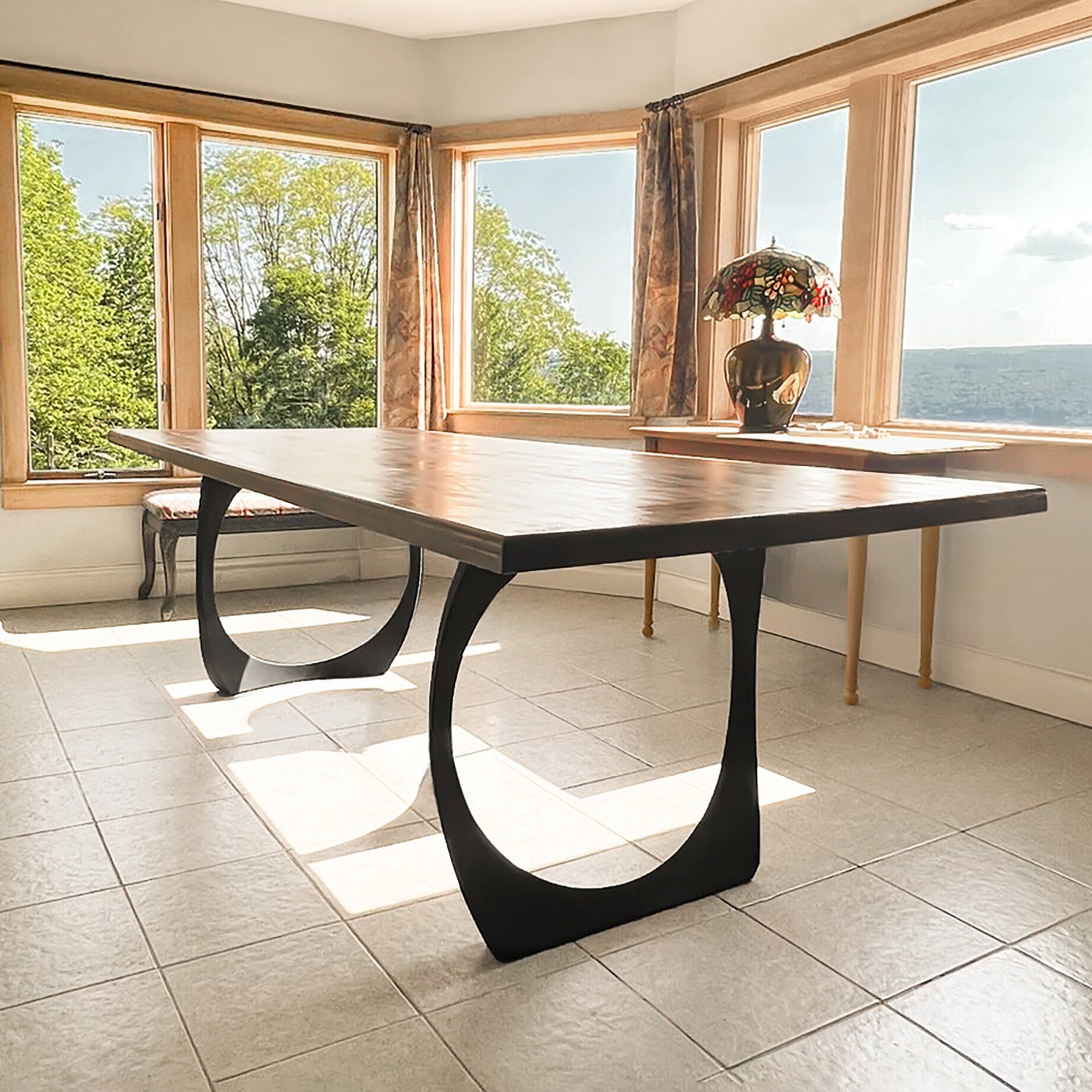Leading Fads in Dining Room Table Legs to Elevate Your Eating Area
Leading Fads in Dining Room Table Legs to Elevate Your Eating Area
Blog Article
An In-depth Check Out Table Leg Styles: Locating the Perfect Suit
Picking the ideal table leg style is critical for both aesthetic allure and useful performance. Conventional four legs offer classic beauty and security, while the stand base provides raised legroom and a modern look. For those with bigger tables, trestle legs make certain strong assistance, whereas barrette legs present a mid-century modern-day vibe with their minimal design. The x-shaped legs blend contemporary style with boosted stability. Each of these alternatives brings unique advantages, making the choice extra than just an issue of preference. Explore further to find which style flawlessly enhances your dining area and lifestyle.
Standard Four Legs
Among the various sorts of dining table leg styles, the conventional four-leg layout stays an ageless choice for numerous houses. This traditional arrangement offers an unified blend of functionality and aesthetic appeals, making it a seasonal fave. Four legs provide balanced assistance, guaranteeing the table remains steady and with the ability of bearing significant weight. This is particularly helpful for families that frequently hold huge gatherings or use their eating table for numerous objectives, such as work or crafting.
From an aesthetic perspective, the typical four-leg style can be conveniently adapted to various interior styles. Whether crafted from timber, metal, or a mix of products, these legs can be elaborately carved, smooth and minimalistic, or anything in between. Their convenience enables them to enhance both rustic and modern settings seamlessly.
Moreover, the simple structure of the four-leg layout promotes simplicity of activity and positioning within a room. Unlike more complex bases, this design minimizes obstructions, providing enough legroom for diners. In recap, the typical four-leg table leg design weds enduring sophistication with useful capability, making it an astute option for those looking for both form and feature in their dining furnishings.
Pedestal Base
Usually celebrated for its stylish and space-efficient layout, the pedestal base is a prominent choice to the standard four-leg configuration in eating table leg styles. Without edge legs, diners are afforded greater liberty of motion, making it a perfect choice for round and oblong tables that promote more intimate and comprehensive gatherings.
The central column itself provides a canvas for detailed styles and artistic expressions, including a component of aesthetic passion underneath the table. In recap, the stand base combines capability with design, making it a fine-tuned and sensible choice for varied dining settings.
Trestle Legs
Trestle legs give a durable and classic foundation for eating tables, characterized by their horizontal cross-bracing and sturdy assistance beam of lights. Stemming from medieval times, this style has evolved yet retained its necessary framework, making it a seasonal favorite in both standard and contemporary settings. The central trestle beam, frequently sustained by two or more upright posts, offers remarkable security, permitting bigger table lengths without the requirement for additional legs.
A significant advantage of trestle leg tables is the ample legroom they provide. Unlike tables with 4 edge legs, the lack of obstructions at click now the table's sides supplies unimpeded space for chairs and diners, boosting comfort and availability. This makes trestle tables excellent for accommodating bigger gatherings, whether in an eating area or a reception hall.
The aesthetic versatility of trestle legs is noteworthy. Offered in a range of materials such as wood, steel, and composite, they can be completed to enhance a wide variety of interior designs. From rustic farmhouse to streamlined modern designs, trestle legs can be personalized to suit individual tastes. Their enduring allure and practical advantages make trestle legs an engaging choice for those looking for both style and practicality in their table.
Hairpin Legs

The charm of barrette legs depends on their simpleness and versatility - dining room table legs. Readily available in a variety of materials, including steel and brass, they can be finished in many shades to match various indoor designs. Whether coupled with a rustic wooden tabletop or a contemporary glass surface area, barrette legs easily mix functionality with a touch of vintage charm
Durability is another noteworthy function of barrette legs. Despite their delicate appearance, these legs are crafted to bear significant weight, making sure the table continues to be stable and protected. Furthermore, they are reasonably easy to install, making them a prominent option for do it yourself enthusiasts and professional furniture manufacturers alike.
X-Shaped Legs

Created from materials such as steel, timber, or a mix of both, X-shaped legs can be customized to match numerous layout choices. Steel legs often lend a smooth and industrial feel, suitable for loft-style apartments and modern dining rooms.
Additionally, the design behind X-shaped legs guarantees even weight circulation, reducing the danger of wobbling and improving sturdiness. This makes them specifically well-suited for see this site bigger table that require added assistance. Fundamentally, X-shaped legs blend useful engineering with contemporary appearances, making them a classic choice for diverse dining atmospheres.
Verdict
A comprehensive understanding of table leg designs reveals the distinct attributes and benefits of each style. visit Conventional 4 legs provide stability and timeless allure, while stand bases supply legroom and a streamlined look. Trestle legs make sure durable support for bigger tables, and hairpin legs introduce a mid-century modern-day aesthetic. X-shaped legs combine contemporary style with enhanced stability. Picking the ideal leg design makes sure both practical and aesthetic satisfaction in any kind of eating area.
Report this page